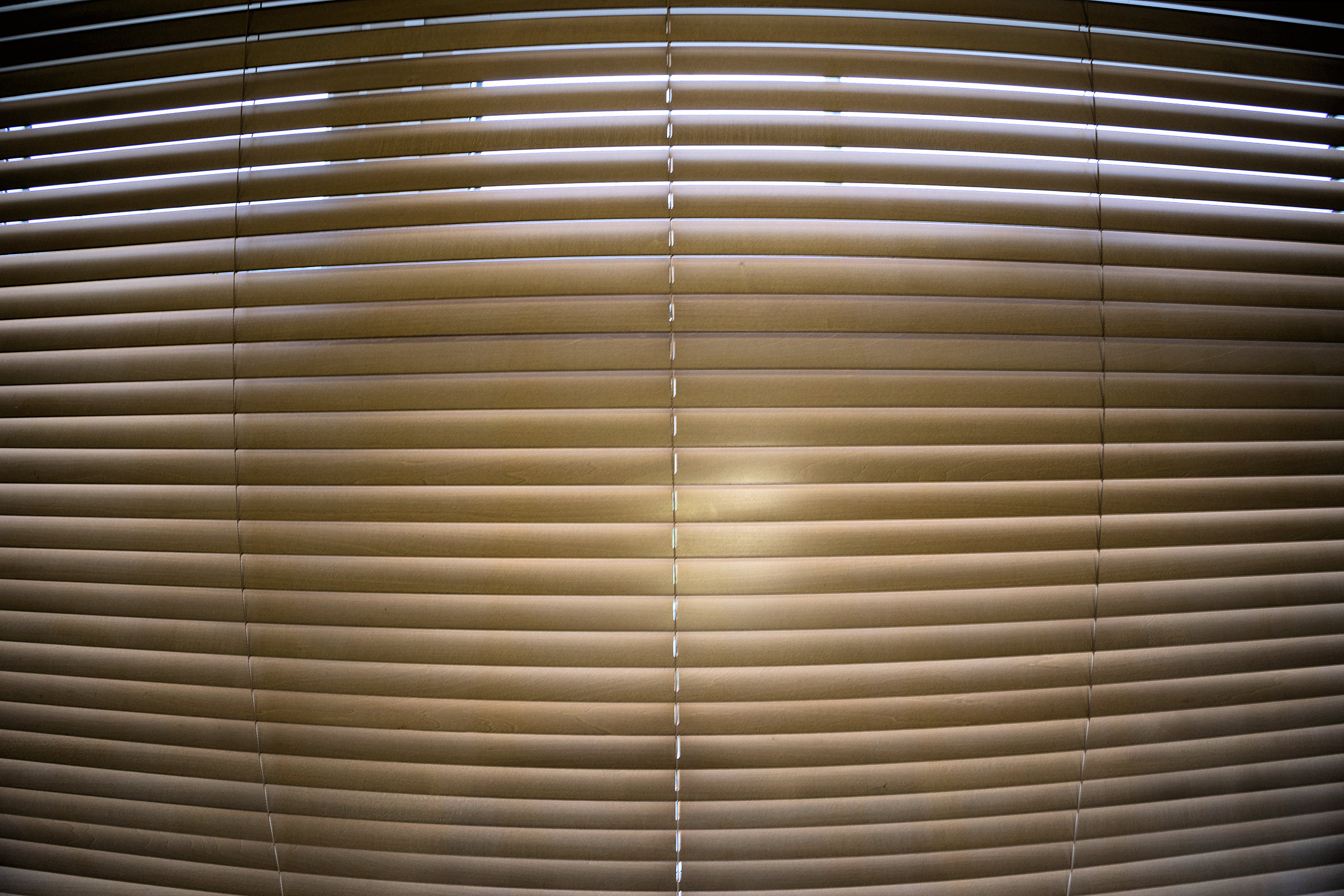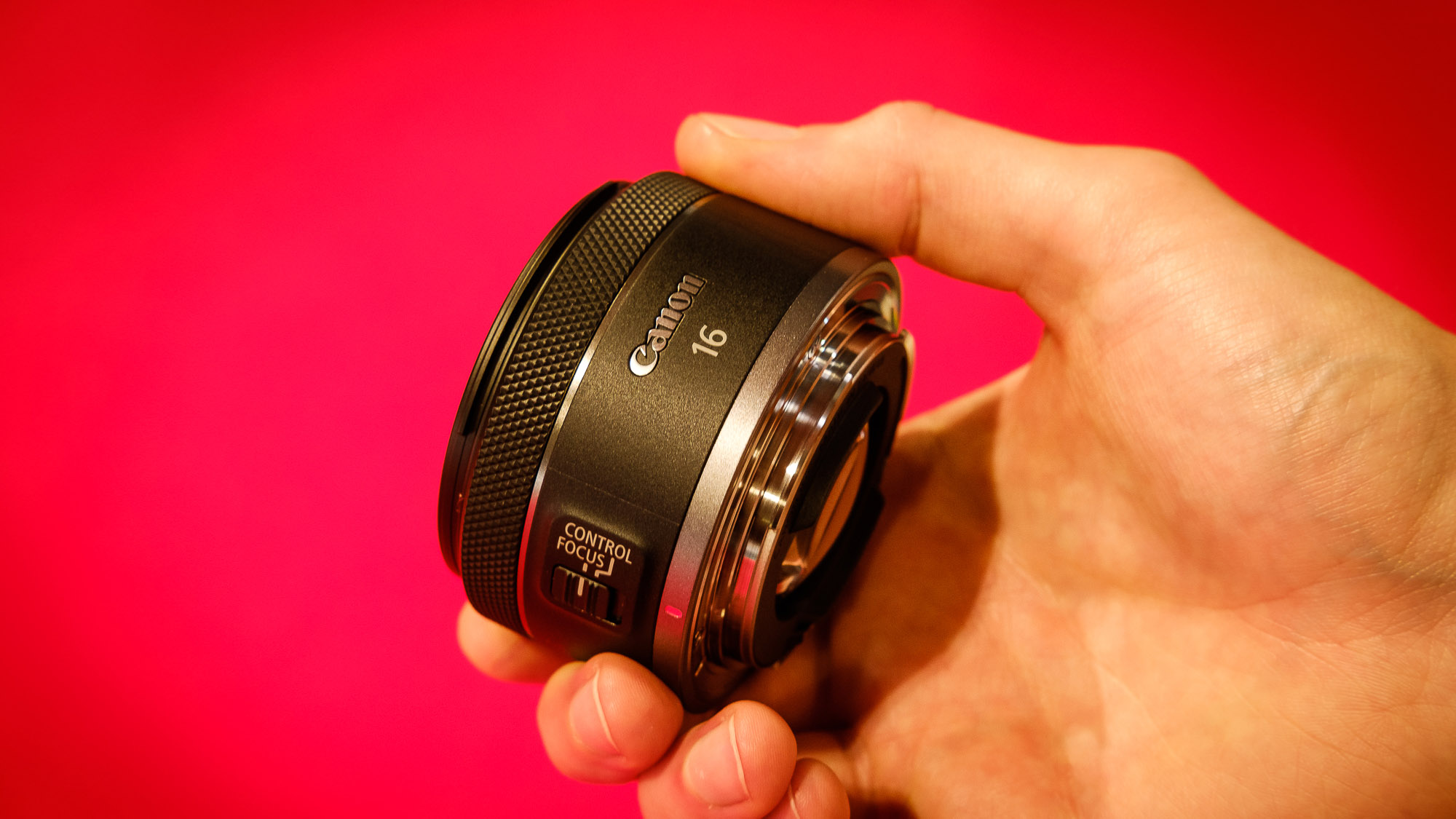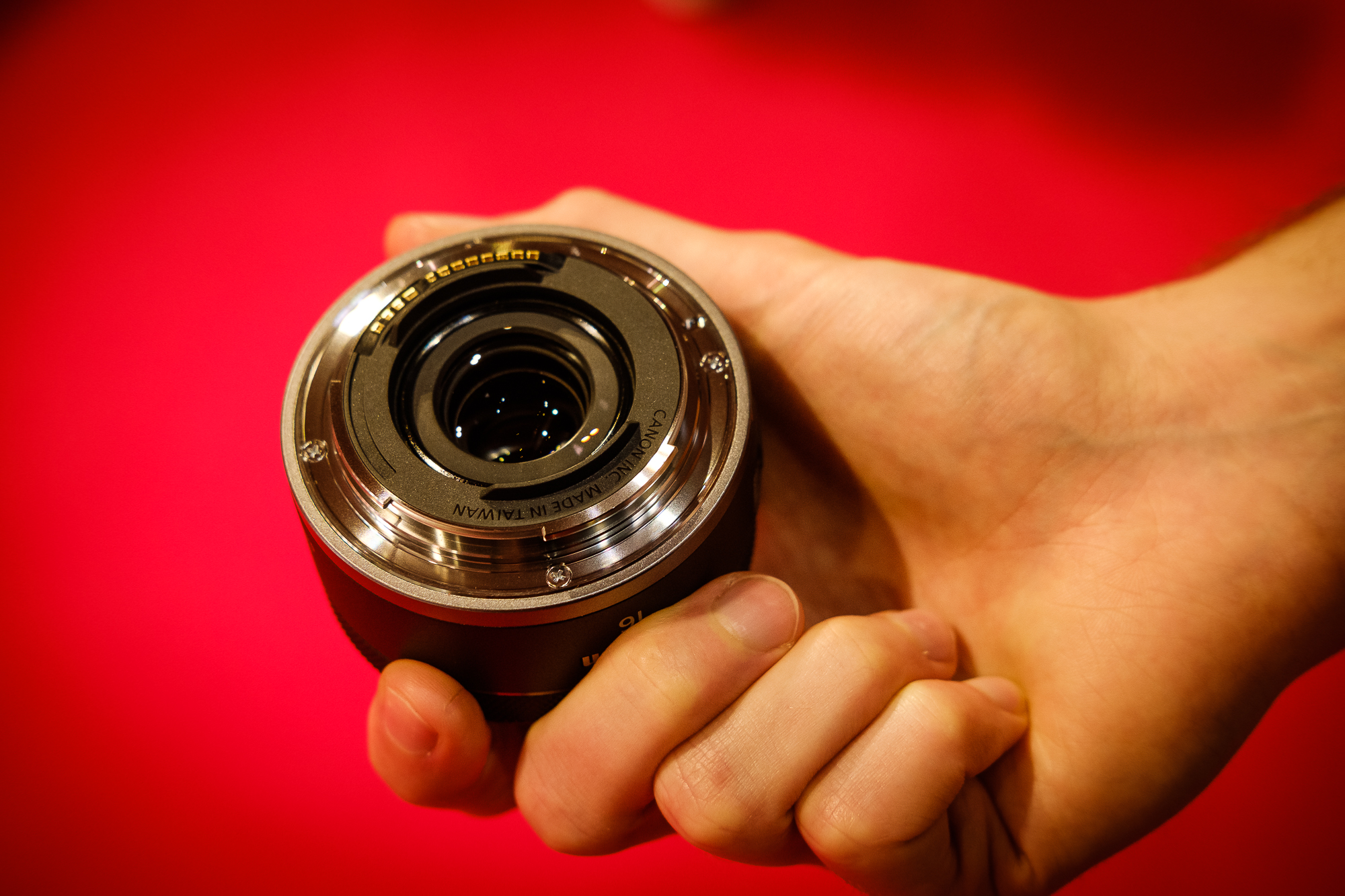Digital Camera World Verdict
The Canon RF 16mm f/2.8 STM, like the RF 35mm, 50mm and 85mm primes before it, makes a convincing case for leaving a standard zoom lens out of the shooting equation and sticking to prime numbers. And even if you do generally shoot with a standard zoom, the RF 16mm is an excellent addition, delivering an ultra-wide viewing angle with convincing image quality and all-round performance, from an unfeasibly small lens that’s unbeatable value for money. If ever a lens was a no-brainer, it’s this one.
Pros
- +
Ultra-wide viewing angle
- +
Pretty fast aperture rating
- +
Amazingly compact and lightweight
- +
Very well priced
Cons
- -
Uncorrected barrel distortion is huge
- -
Lens hood sold separately
- -
No weather-seals or IS
Why you can trust Digital Camera World
Canon faced some initial criticism for its big and hefty RF-mount lenses that somewhat negated the slimline advantage of mirrorless EOS R-series cameras. More recently, the pounds have dropped off with a spate of compact, lightweight lenses, including the RF 35mm f/1.8 IS Macro STM, RF 50mm f/1.8 STM, RF 85mm F2 Macro IS STM, RF 600mm F11 IS STM and RF 800mm F11 IS STM, as well as the RF 14-35mm F4L IS USM, RF 24-105mm F4L IS USM, RF 70-200mm F4L IS USM and RF 100-400mm F5.6-8 IS USM zooms. That’s quite a list!
The RF 16mm F2.8 STM is the latest prime to join the catwalk club, with slinky dimensions and a weight of just 165g, while delivering an ultra-wide viewing angle that’s ideal for shooting everything from cramped architectural interiors, through sweeping landscapes to the starry night sky above. And all at an incredibly competitive price.
• Read more: PhotoPlus: The Canon Magazine
• Read more: Best Canon RF lenses
Canon RF 16mm f/2.8 STM: Specifications
Mount: Canon RF
Full frame: Yes
Lens construction: 9 elements in 7 groups
Diaphragm blades: 7
Minimum aperture: f/22
Closest focusing distance: 0.13m
Maximum magnification: 0.26x
Filter size: 43mm
Weather sealed: No
Image stabilization: No
Dimensions: 69.2 x 40.1mm
Weight: 165g
Canon RF 16mm f/2.8 STM: Key features
The latest in a prestigious line of compact, lightweight Canon RF-mount prime lenses, this one’s key feature is its ultra-wide viewing angle. Compared with typical ultra-wide-angle zooms, it’s unfeasibly small and a real featherweight of a lens. That’s all the more remarkable, considering its fairly fast f/2.8 aperture rating.
Optical highlights include an aspherical element to boost sharpness and reduce distortion, and Super Spectra Coating to minimize ghosting and flare. For the latter, you really also need the ‘optional’ EW-65C, which Canon sells separately for around £35/$35.
Autofocus is based on a stepping motor which is whisper-quiet but not completely silent, and is pretty rapid for stills yet allows smooth autofocus transitions when shooting video. The minimum focus distance is just 0.13x, as measured from the focal plane (basically, the active surface of the image sensor) towards the rear of the camera body. This enables you to get in really close to subjects and make the most of the ultra-wide-angle lens’s ability to exaggerate perspective between foreground and background areas within a scene.
The best camera deals, reviews, product advice, and unmissable photography news, direct to your inbox!
Canon RF 16mm f/2.8 STM: Build and handling
The RF 16mm uses an almost identical chassis to the RF 50mm f/1.8, measuring just .4mm wider at just 69.2 x 40.1mm and weighing just 5g more at a feather-light 165g. As such, it behaves fantastically well as an all-day lens for shooting wide-spanning photos and videos.
Like some other lenses including the Canon RF 50mm F1.8 STM, downsizing is aided by the lack of a separate customizable control ring. As such, the manual focus ring comes complete with a Focus/Control switch, so you can assign various functions to the ring when using autofocus. For manual focusing, the ring operates smoothly and with very good precision, which is a bonus for astrophotography, to which the lens is well suited thanks to its ultra-wide viewing angle and fast aperture rating.
As you’d expect at the price, the lens has no ‘professional’ aspirations and is aimed predominantly at the beginner/mid-range photography sectors. As such, there are no weather-seals but the standard of construction nevertheless feels solid and robust.
The 16mm focal length is ideal for vloggers shooting selfie videos, as the wide viewing angle is great for including more of your surroundings when doing a piece to camera to add context – and the f/2.8 aperture is still enough to create subject separation while filming.
That super-wide angle also enables to crop in using digital image stabilization, meaning that even the IBIS-free EOS R and Canon EOS RP (with which this makes a great, compact combo) can benefit from stabilization.
Canon RF 16mm f/2.8 STM: Performance
For such an ultra-wide-angle lens, sharpness is very good on the whole and, if you stop down to f/5.6, that remains true right out to the extreme edges and corners of the image frame. Lateral chromatic aberration is also very well controlled, even with automatic in-camera correction switched off. Vignetting is quite noticeable at f/2.8 but in-camera correction is also available for this.
Speaking of in-camera corrections, the one for distortion can’t be switched off, and with good reason. Like the Canon RF 24-240mm F4-6.3 IS USM at the short end of its zoom range, the RF 16mm produces heinous barrel distortion, relying entirely on an in-camera fix which can’t be switched off, as it’s grayed out in the menu. That’s also the case if you process raw files in Canon’s Digital Photo Professional software. If you process raw files in the likes of Adobe Camera RAW without distortion correction, the results look more like they’ve come from a fisheye lens. Either way, an increasing number of lenses for mirrorless cameras are heavily dependent on automatic corrections, and it’s the end result that really matters, which looks pretty much distortion-free.
Canon RF 16mm f/2.8 STM: Performance

Canon RF 16mm f/2.8 STM: Lab results
We run a range of lab tests under controlled conditions, using the Imatest Master testing suite. Photos of test charts are taken across the range of apertures and zooms (where available), then analyzed for sharpness, distortion and chromatic aberrations.
We use Imatest SFR (spatial frequency response) charts and analysis software to plot lens resolution at the centre of the image frame, corners and mid-point distances, across the range of aperture settings and, with zoom lenses, at four different focal lengths. The tests also measure distortion and color fringing (chromatic aberration).
Sharpness:
Sharpness is very good across most of the image frame, even when shooting wide-open at f/2.8, and the extreme edges and corners follow suit between f/5.6 and f/11. However when compared to most other Canon RF-mount lenses, centre sharpness is a little disappointing.
Fringing:
Lateral chromatic aberration is very well controlled, even with in-camera correction switched off, right out to the corners of the frame.
Distortion: -9.52
Optically, the lens produces massive barrel distortion, but it’s taken care of with in-camera correction, or when using Canon’s Digital Photo Professional processing software.
Canon RF 16mm f/2.8 STM: Verdict
An amazingly versatile lens, the RF 16mm is tiny yet epic for shooting anything from architectural interiors to sweeping landscapes, and from close-ups to the starry sky at night. Despite its pocket-sized build, it delivers impressive image quality and boasts a speedy, unerringly accurate autofocus system. Canon really has come up trumps with this lens, which ticks all the right boxes and is incredible value for money at the price. It's currently the second-most affordable lens in the RF lineup at just $299.99 / £319 / AU$549, meaning that even those who would otherwise skip a relatively niche focal length like this can pick one up and start exploring a new field of view.
Read more:
Canon RF 35mm f/1.8 IS Macro STM review
Canon RF 50mm f/1.8 STM review
Canon RF 15-35mm f/2.8 L IS USM review
Canon RF 85mm f/2 Macro IS STM review
Canon EOS R review
Canon EOS RP review
Matthew Richards is a photographer and journalist who has spent years using and reviewing all manner of photo gear. He is Digital Camera World's principal lens reviewer – and has tested more primes and zooms than most people have had hot dinners!
His expertise with equipment doesn’t end there, though. He is also an encyclopedia when it comes to all manner of cameras, camera holsters and bags, flashguns, tripods and heads, printers, papers and inks, and just about anything imaging-related.
In an earlier life he was a broadcast engineer at the BBC, as well as a former editor of PC Guide.



















